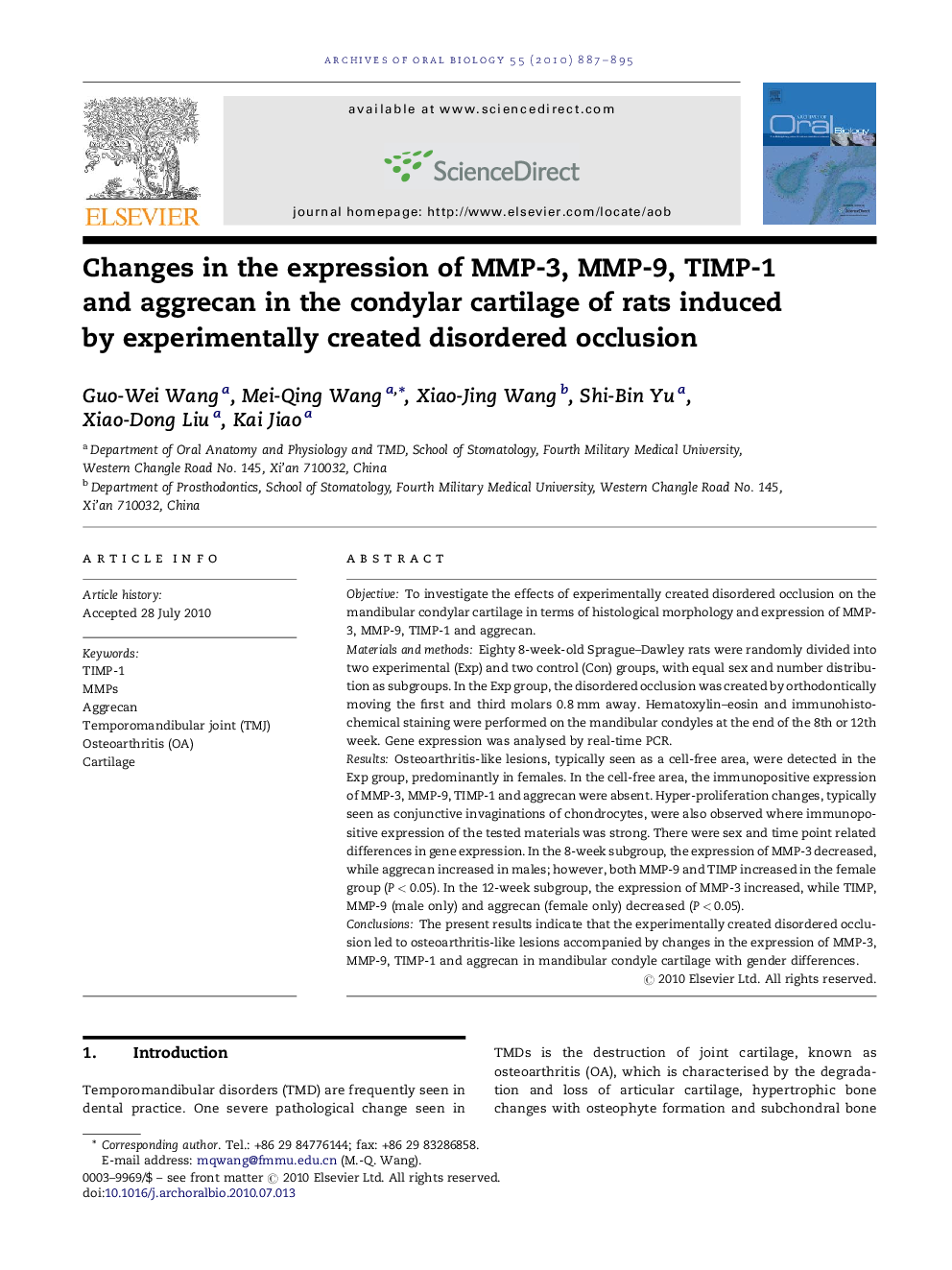| Article ID | Journal | Published Year | Pages | File Type |
|---|---|---|---|---|
| 3121429 | Archives of Oral Biology | 2010 | 9 Pages |
ObjectiveTo investigate the effects of experimentally created disordered occlusion on the mandibular condylar cartilage in terms of histological morphology and expression of MMP-3, MMP-9, TIMP-1 and aggrecan.Materials and methodsEighty 8-week-old Sprague–Dawley rats were randomly divided into two experimental (Exp) and two control (Con) groups, with equal sex and number distribution as subgroups. In the Exp group, the disordered occlusion was created by orthodontically moving the first and third molars 0.8 mm away. Hematoxylin–eosin and immunohistochemical staining were performed on the mandibular condyles at the end of the 8th or 12th week. Gene expression was analysed by real-time PCR.ResultsOsteoarthritis-like lesions, typically seen as a cell-free area, were detected in the Exp group, predominantly in females. In the cell-free area, the immunopositive expression of MMP-3, MMP-9, TIMP-1 and aggrecan were absent. Hyper-proliferation changes, typically seen as conjunctive invaginations of chondrocytes, were also observed where immunopositive expression of the tested materials was strong. There were sex and time point related differences in gene expression. In the 8-week subgroup, the expression of MMP-3 decreased, while aggrecan increased in males; however, both MMP-9 and TIMP increased in the female group (P < 0.05). In the 12-week subgroup, the expression of MMP-3 increased, while TIMP, MMP-9 (male only) and aggrecan (female only) decreased (P < 0.05).ConclusionsThe present results indicate that the experimentally created disordered occlusion led to osteoarthritis-like lesions accompanied by changes in the expression of MMP-3, MMP-9, TIMP-1 and aggrecan in mandibular condyle cartilage with gender differences.
